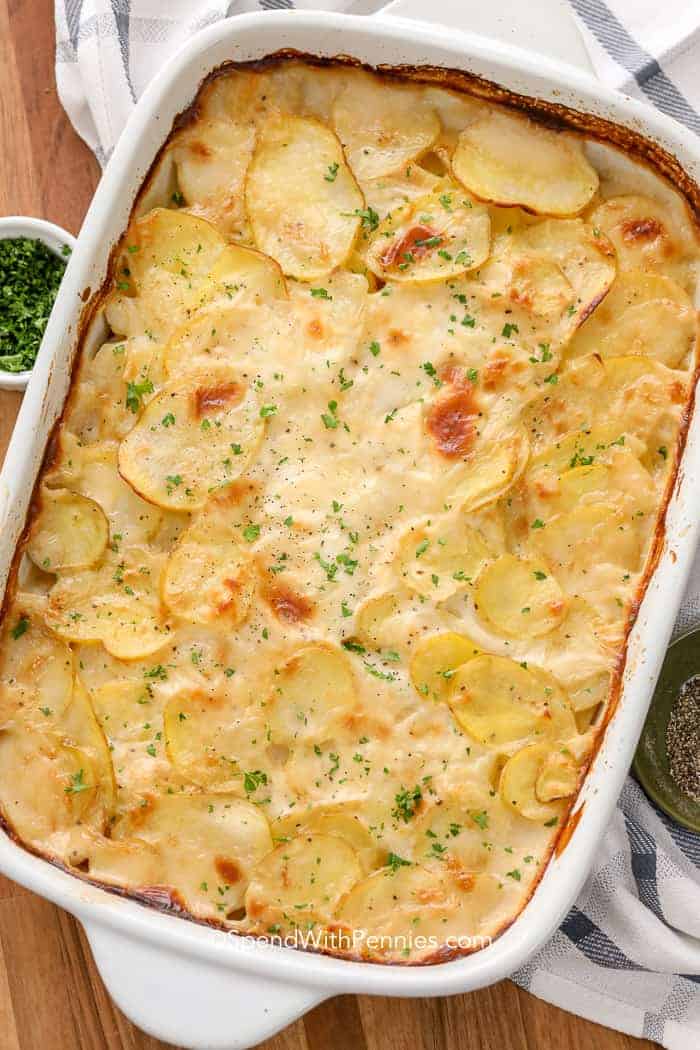Perfect Potato Scallop Recipes for Your Family Gatherings!
Hey there, amazing parents! If you’re on the hunt for a scrumptious side dish that’ll have your little ones cheering for more, you’ve hit the jackpot with these potato scallop recipes! From classic comforts to delightful twists, we’ve got the perfect lineup ready to make your family meals extra special.
Not only will we guide you through the basics of crafting the ultimate potato scallops, but we’ll sprinkle in some fun tips that will turn this cooking journey into a kitchen adventure for you and your kiddos. So, preheat your ovens, and let’s dive into the world of crispy, golden perfection that is the beloved potato scallop!
A Quick Guide to Potato Scallops
Potato scallops, also known as potato cakes or potato fritters in some parts of the world, are a crowd-pleasing treat! Thinly sliced potatoes coated in a light batter and fried to a delectable crunch, what’s not to love? Before we unleash the recipes, let’s walk through some potato prep basics to ensure your scallops are the talk of the table.
Choosing the Right Potatoes
Starting strong with the right type of potato is crucial for your scallops. You’ll want to use starchy potatoes like Russets or Yukon Golds. These potatoes fry up nicely, giving you that signature crispy exterior and fluffy interior.
Slicing to Perfection
Thin, even slices are key for ideal potato scallops. While a mandoline slicer is your best bet for precision, a sharp kitchen knife and a steady hand will get the job done too. Aim for slices about 1/8th to 1/4th of an inch thick – thick enough to hold up to the fryer but thin enough to cook through quickly.
Best Batter Basics
The batter is what sets a good potato scallop apart from a great one. A simple blend of flour, salt, and beer or sparkling water will give you a light, airy coating that crisps up beautifully. For those looking for a gluten-free option, chickpea flour is a fantastic alternative.
Family-Friendly Potato Scallop Recipes
Now let’s get to the heart of the matter – the recipes! We’ve curated a selection of potato scallop variations that are sure to delight everyone at your dinner table. Each recipe is easy to follow and can involve your little sous chefs for a bonding cooking experience!
Classic Crispy Potato Scallops

First up, we’ve got the timeless classic. This no-fuss recipe is all about letting the natural flavor of the potatoes shine through.
- Prep Time: 15 minutes
- Cook Time: 10 minutes per batch
- Total Time: 25+ minutes
Ingredients:
- 4 large Russet potatoes
- 1 cup all-purpose flour (or chickpea flour for a gluten-free option)
- 1 teaspoon salt
- 1 1/2 cups cold beer or sparkling water
- Vegetable oil for frying
Method:
- Peel and slice the potatoes into thin rounds.
- In a bowl, whisk together the flour and salt. Slowly pour in the beer or sparkling water, whisking until the batter is smooth.
- Heat the oil in a large frying pan over medium-high heat to 375°F (190°C).
- Dip potato slices into the batter, allowing any excess to drip off, and carefully lower them into the hot oil.
- Fry until golden brown on both sides, turning once. This should take about 2-3 minutes per side.
- Remove with a slotted spoon and drain on paper towels. Season with extra salt while still hot.
Voila! You now have a pile of irresistibly crunchy potato scallops ready to wow your family. Serve them up with your favorite dipping sauce, and watch them disappear before your eyes.

5 Things Parents Should Know When Preparing Potato Scallop Recipes
Creating the perfect potato scallop is not just about following a recipe; it’s about knowing the essentials that make cooking a smooth and enjoyable experience. Here are five golden nuggets of wisdom to keep in mind:
1. The Importance of Potato Selection
Not all potatoes are created equal! Starchy potatoes like Russets are ideal for frying due to their low moisture content, which gives you that desired crispy texture. Waxy potatoes can be used too, but they may not get as crisp.
2. Kid Participation Safety
When involving the young ones, safety comes first, especially with hot oil involved. Give them tasks like coating the potatoes in batter, but keep the slicing and frying for the adults to manage!
3. Frying Needs Your Full Attention
It’s essential to never leave hot oil unattended, especially with children around. Keep a watchful eye on the temperature of the oil to prevent it from getting too hot, which can cause it to smoke or, even worse, catch fire.
4. Seasoning is Key
Season each batch of potato scallops as soon as they come out of the fryer. Hot potatoes will absorb the seasoning better, creating a more flavorsome bite.
5. Keep Them Crispy
If you’re not serving your potato scallops immediately, you can keep them warm and crispy in the oven. Preheat the oven to a low temperature, around 200°F (95°C), and place the fried scallops on a wire rack in a baking sheet. This allows the air to circulate, preventing the scallops from getting soggy.
Cheesy Garlic & Herb Potato Scallops

Love cheese? These potato scallops have an aromatic blend of garlic and herbs, with a cheesy surprise inside!
Ingredients:
- 4 large Yukon Gold potatoes
- 1 cup shredded cheese (cheddar or mozzarella works great)
- 1 cup all-purpose flour
- 1 teaspoon garlic powder
- 1 tablespoon finely chopped parsley
- 1 teaspoon salt
- 1 1/2 cups cold beer or sparkling water
- Vegetable oil for frying
Method:
- Peel and slice the potatoes into thin rounds. Place a small pinch of shredded cheese between two potato slices to create a ‘sandwich.’
- Mix the flour, garlic powder, parsley, and salt. Gradually add beer or sparkling water to form a smooth batter.
- Preheat oil to 375°F (190°C) in a large frying pan.
- Dip the potato-cheese sandwiches into the batter, coating them evenly, and fry until golden brown on both sides.
- Transfer to paper towels to drain and season with extra salt. Serve while the cheese is deliciously melted!
For more great articles please see here. For more information see here
Disclaimer
The articles available via our website provide general information only and we strongly urge readers to exercise caution and conduct their own thorough research and fact-checking. The information presented should not be taken as absolute truth, and, to the maximum extent permitted by law, we will not be held liable for any inaccuracies or errors in the content. It is essential for individuals to independently verify and validate the information before making any decisions or taking any actions based on the articles.




